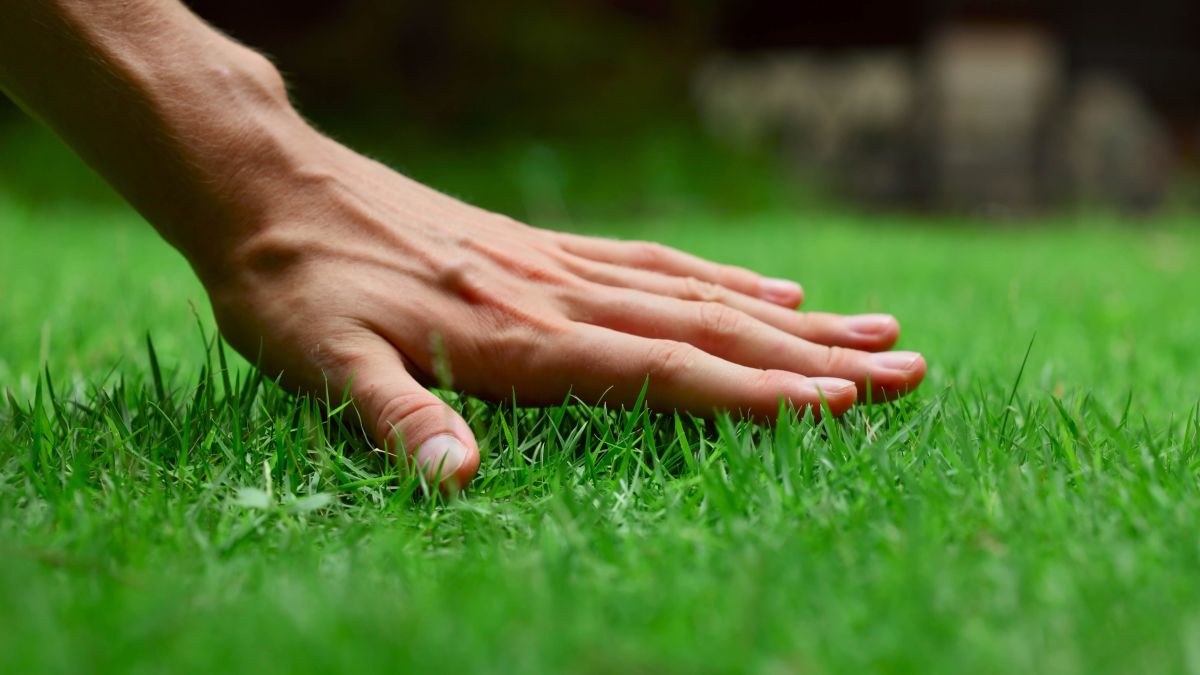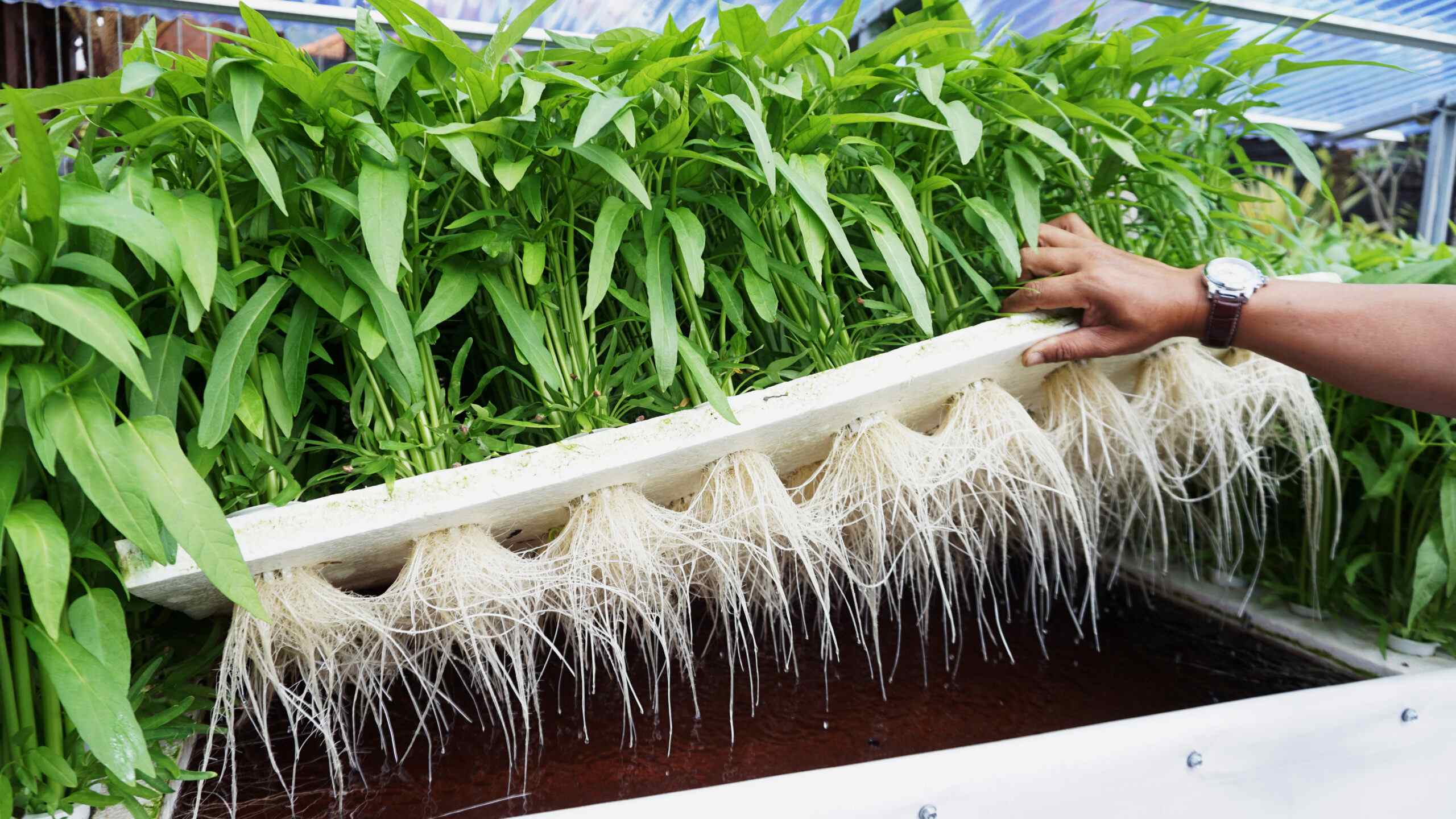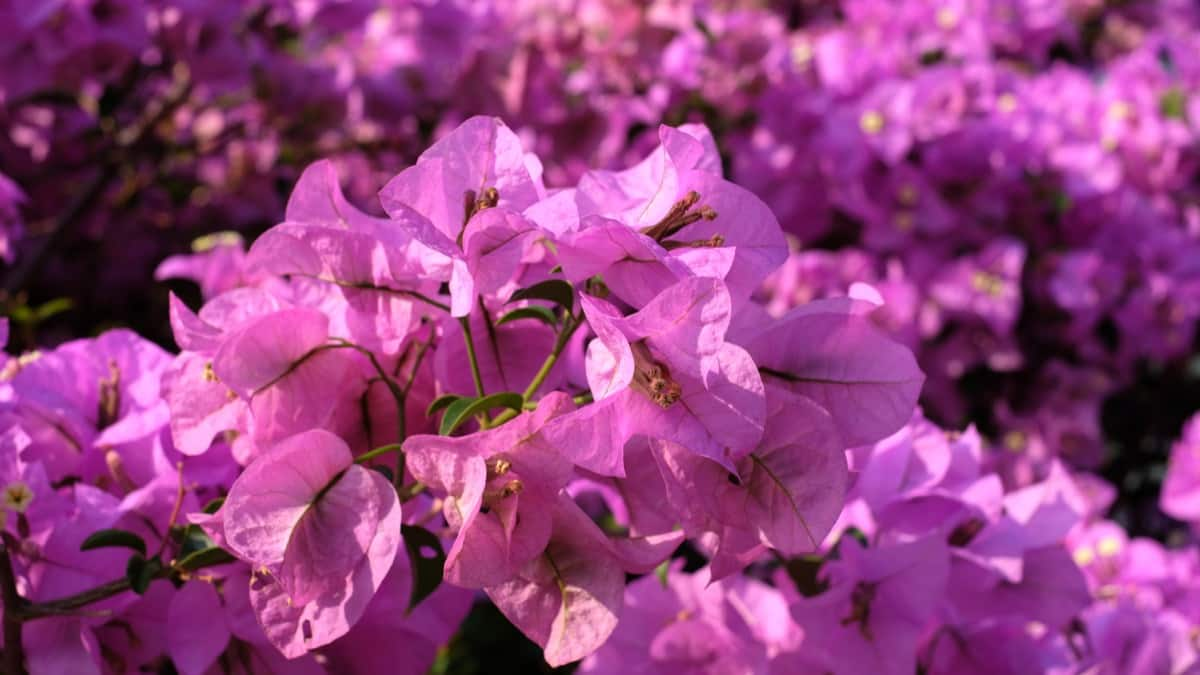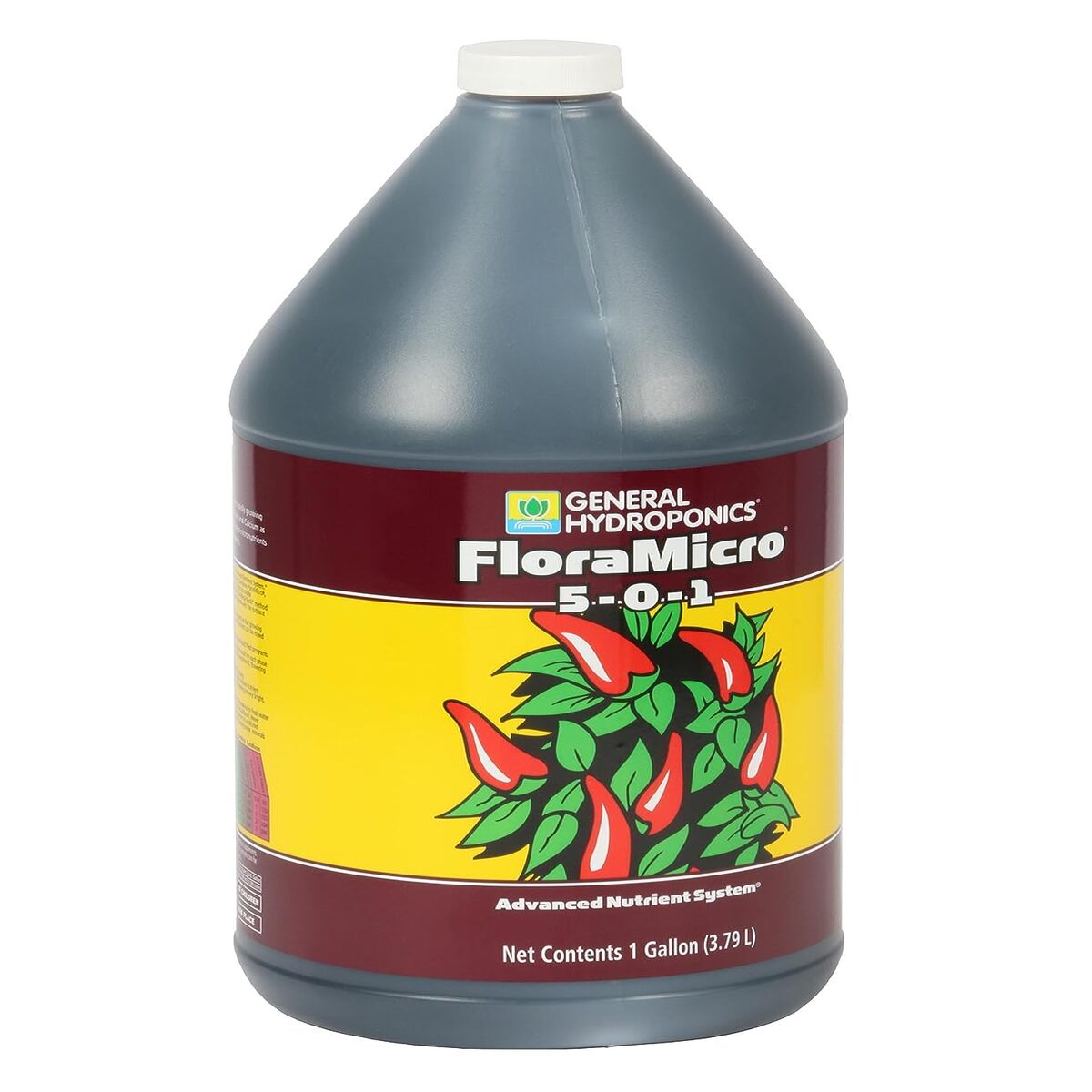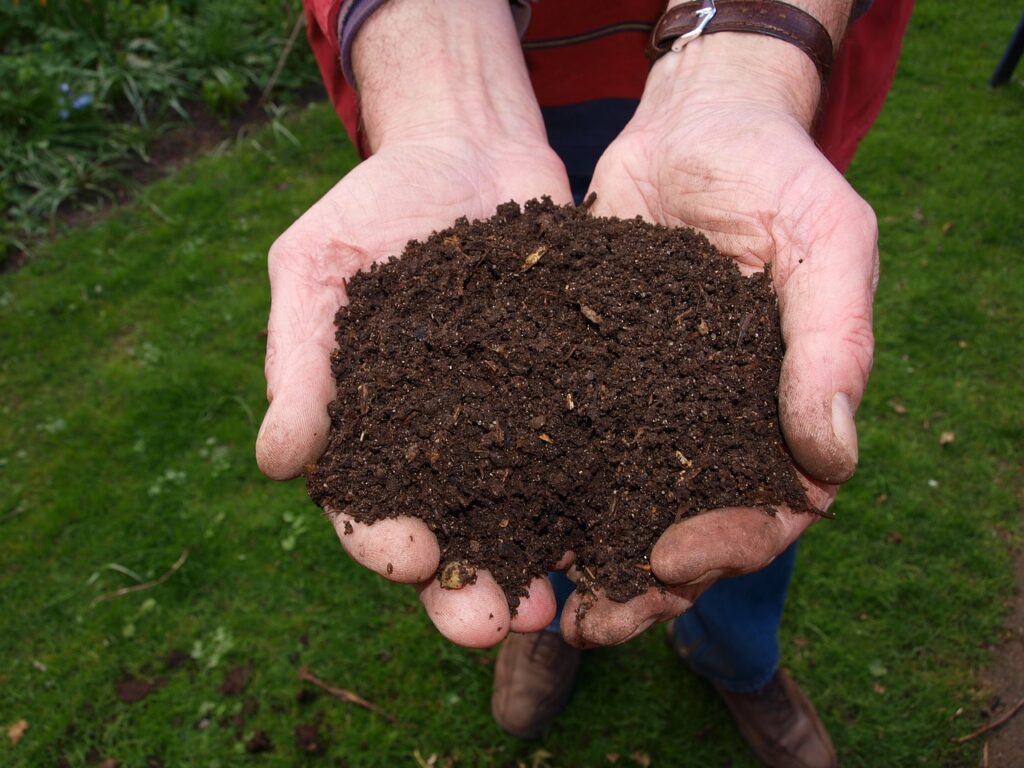Home>Types of Gardening>Ornamental Gardening>What Fertilizer To Use On Centipede Grass
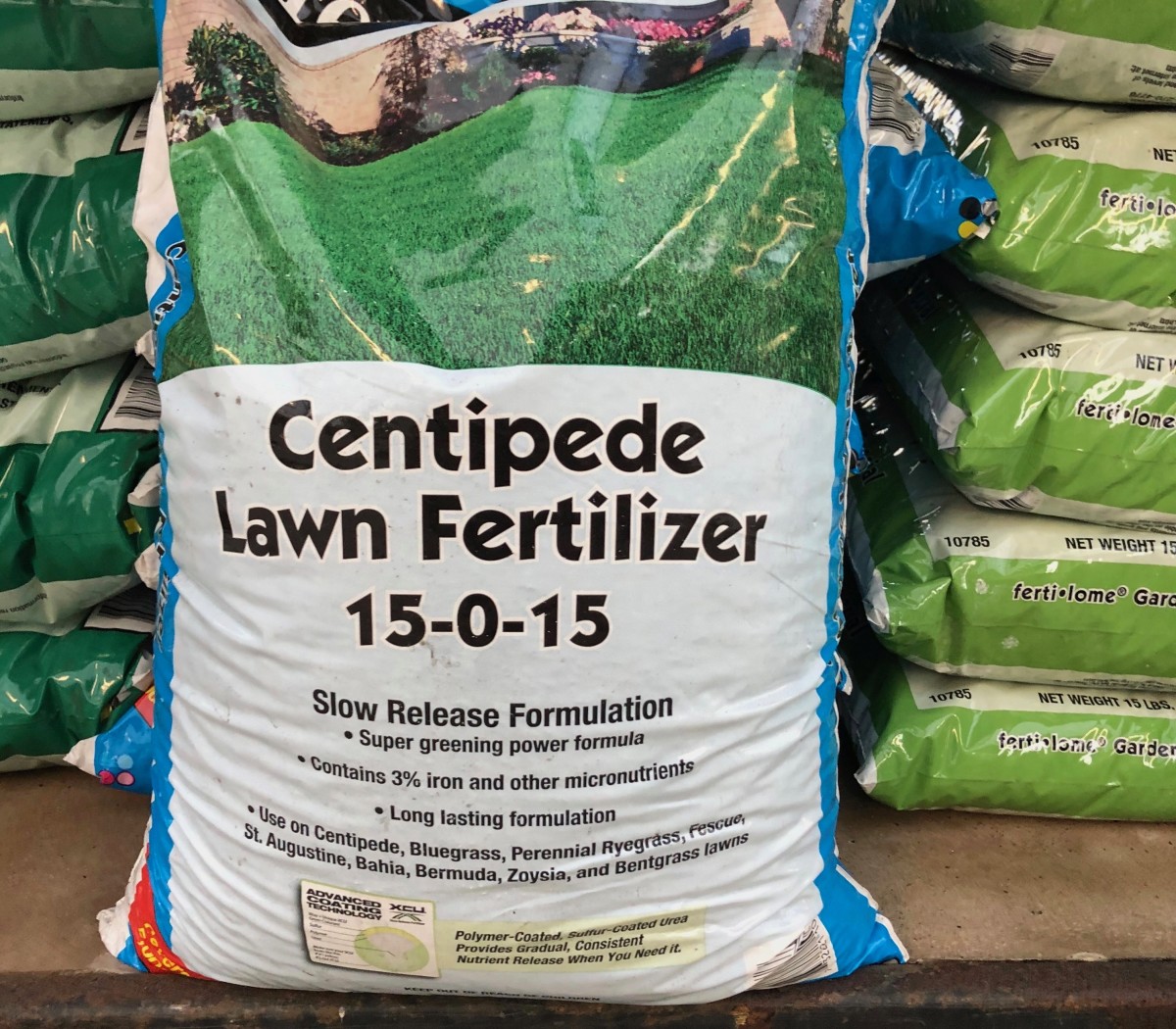

Ornamental Gardening
What Fertilizer To Use On Centipede Grass
Modified: January 22, 2024
Discover the best fertilizer for centipede grass in our comprehensive guide. Enhance your ornamental gardening with expert advice and tips for a thriving lawn.
(Many of the links in this article redirect to a specific reviewed product. Your purchase of these products through affiliate links helps to generate commission for Chicagolandgardening.com, at no extra cost. Learn more)
Table of Contents
- Introduction
- Understanding Centipede Grass
- Importance of Fertilizing Centipede Grass
- Factors to Consider before Choosing Fertilizer
- Recommended Fertilizers for Centipede Grass
- Organic Fertilizers for Centipede Grass
- Synthetic Fertilizers for Centipede Grass
- Applying Fertilizer to Centipede Grass
- Dos and Don’ts of Fertilizing Centipede Grass
- Conclusion
Introduction
Welcome to the world of ornamental gardening! If you have a passion for beautiful landscapes and vibrant flowers, then you are in the right place. Ornamental gardening is the art of creating stunning outdoor spaces that are not only visually appealing but also provide a peaceful haven for relaxation and rejuvenation.
In this article, we will delve into the captivating realm of ornamental gardening, exploring various aspects such as selecting the right plants, designing creative layouts, and implementing efficient maintenance strategies. Whether you are a seasoned gardener looking for fresh inspiration or a beginner eager to embark on a new hobby, this article will provide valuable insights and practical tips to help you create your own stunning ornamental garden.
Ornamental gardening is a diverse field that encompasses a wide range of plants and design styles. From delicate roses to exotic orchids, from formal English gardens to wildflower meadows, the possibilities are endless. The key is to understand the unique characteristics of each plant and how to utilize them to create harmonious and visually engaging compositions.
Not only is an ornamental garden a delight for the senses, but it also offers numerous benefits. A well-designed garden can enhance the curb appeal of your home, increase property value, attract wildlife such as birds and butterflies, and provide a sanctuary for relaxation and connection with nature. It is a space that can be enjoyed by the whole family, creating lasting memories and a sense of pride in your own creation.
So, let’s dive into the world of ornamental gardening and unlock the secrets to creating a stunning and vibrant outdoor space. Whether you have a small balcony or acres of land, with the right knowledge and a dash of creativity, you can transform any space into a breathtaking oasis of beauty and tranquility. Get ready to unleash your inner gardener and embark on a journey filled with color, fragrance, and endless possibilities!
Understanding Centipede Grass
Centipede grass (Eremochloa ophiuroides) is a warm-season grass that is widely used for ornamental lawns due to its attractive appearance and low maintenance requirements. This grass species is native to Southeast Asia and is well-known for its ability to thrive in hot and humid climates.
One of the key characteristics of centipede grass is its medium to light green color, which gives lawns a lush and vibrant look. The grass has a fine texture and a low growth habit, making it suitable for both residential and commercial landscapes. It forms a dense and attractive carpet that feels soft underfoot.
In addition to its visual appeal, centipede grass offers several advantages for ornamental gardening. One of the main benefits is its low maintenance requirements. Unlike other grass species, centipede grass has a slow growth rate and requires less frequent mowing. This can significantly reduce the time and effort required to maintain a pristine lawn.
Another advantage of centipede grass is its ability to tolerate acidic soils. It is known for its adaptability to a wide range of soil conditions, including those with low fertility and high acidity. This makes it a popular choice for areas where other grass species may struggle to thrive.
Centipede grass also has good drought tolerance, which means it can withstand periods of dry weather without wilting or turning brown. However, it is important to provide proper irrigation during extended dry spells to ensure the health and vitality of the grass.
It is worth noting that centipede grass has some limitations as well. It is not tolerant of heavy foot traffic and can be easily damaged by excessive wear and tear. Therefore, it may not be the best choice for high-traffic areas such as playgrounds or sports fields.
To summarize, centipede grass is a popular choice for ornamental lawns due to its attractive appearance, low maintenance requirements, and adaptability to various soil conditions. Its vibrant green color, fine texture, and drought tolerance make it an excellent option for creating lush and visually appealing outdoor spaces. By understanding the unique characteristics of centipede grass, you can make informed decisions when it comes to caring for and maintaining your ornamental lawn.
Importance of Fertilizing Centipede Grass
Fertilizing centipede grass is crucial for maintaining its health, vigor, and overall appearance. As a warm-season grass, centipede grass has specific nutritional needs that should be met through regular fertilizer applications. Proper fertilization provides essential nutrients that promote growth, improve color, increase pest and disease resistance, and enhance the overall vitality of the grass.
One of the primary reasons for fertilizing centipede grass is to provide it with the necessary nutrients it may not receive naturally from the soil. While centipede grass is known for its adaptability to low fertility soils, supplementing it with fertilizers ensures that it receives an adequate supply of essential elements such as nitrogen, phosphorus, and potassium. These nutrients are vital for the grass to develop strong roots, robust growth, and vibrant green color.
Fertilizing centipede grass also helps in achieving a dense and uniform coverage. Regular application of fertilizer encourages lateral growth, resulting in a thick carpet-like lawn that effectively suppresses weed growth. A well-maintained lawn not only enhances the aesthetic appeal of your outdoor space but also provides better resistance against invasive plants.
In addition, fertilizing centipede grass helps to improve its ability to withstand stress. Whether it’s heat, cold, drought, or disease, a properly fertilized lawn is better equipped to handle various environmental pressures. Fertilizers promote root development, which in turn enhances the grass’s ability to absorb water and nutrients from the soil, making it more resilient in adverse conditions.
Furthermore, fertilizing centipede grass plays a crucial role in preventing nutrient deficiencies. Without proper fertilization, the grass may exhibit signs of nutrient deficiencies, such as yellowing leaves, stunted growth, and reduced overall vigor. By supplying the grass with the necessary nutrients, you can prevent these deficiencies and ensure that your centipede grass remains healthy and visually appealing.
It is important to note that proper timing and application technique are key when fertilizing centipede grass. Excessive or improper use of fertilizers can lead to nutrient overload, nutrient leaching, and environmental pollution. It is recommended to follow the instructions on the fertilizer packaging or consult with a lawn care professional to determine the appropriate amount and frequency of fertilizer applications.
In summary, fertilizing centipede grass is essential for maintaining its health, vigor, and overall appearance. Proper fertilization provides the necessary nutrients for growth, color, and stress resistance. It helps achieve a dense lawn, suppresses weed growth, and prevents nutrient deficiencies. By following proper fertilization practices, you can ensure that your centipede grass remains vibrant, resilient, and visually appealing for years to come.
Factors to Consider before Choosing Fertilizer
Choosing the right fertilizer for your centipede grass is crucial to ensure its health and vitality. With numerous options available in the market, it’s important to consider certain factors before making a decision. By understanding these factors, you can select a fertilizer that meets the specific needs of your centipede grass and promotes optimal growth.
Here are some key factors to consider before choosing a fertilizer:
- Soil Test: Conducting a soil test is essential before selecting a fertilizer. A soil test helps determine the pH level and nutrient content of the soil, allowing you to identify any deficiencies or imbalances. This information is valuable in selecting a fertilizer with the correct nutrient ratio to address any specific needs of the centipede grass.
- Nutrient Requirements: Centipede grass has different nutrient requirements compared to other turfgrass varieties. It typically requires a lower nitrogen input to avoid excessive growth and thatch buildup. Look for a fertilizer with a low nitrogen content and a balanced ratio of other essential nutrients, such as phosphorus and potassium, to support healthy root development and overall plant health.
- Fertilizer Formulation: Fertilizers come in various formulations, including granular, liquid, and slow-release. Consider the pros and cons of each formulation before making a decision. Granular fertilizers are easy to apply and provide a slow-release of nutrients over time. Liquid fertilizers offer quick nutrient uptake and are suitable for foliar feeding. Slow-release fertilizers provide nutrients gradually, reducing the risk of nutrient leaching and potential burn to the grass.
- Application Frequency: Some fertilizers require more frequent applications, while others have a slow-release formulation that lasts longer. Consider your time availability and maintenance preferences when deciding on the application frequency. It’s important to follow the manufacturer’s instructions and avoid over-fertilizing, as this can lead to nutrient runoff and environmental pollution.
- Environmental Considerations: Choose a fertilizer that is environmentally friendly and minimizes the risk of water pollution. Look for fertilizers labeled as “low-phosphorus” or “phosphorus-free,” as excessive phosphorus runoff can contribute to eutrophication in water bodies. Additionally, consider organic or slow-release fertilizers that release nutrients gradually, reducing the risk of leaching.
- Budget: Consider your budget when selecting a fertilizer for your centipede grass. There are various options available at different price points. Keep in mind that the cheapest option may not always provide the best results, so prioritize quality and effectiveness over cost.
By considering these factors before choosing a fertilizer for your centipede grass, you can make an informed decision that meets the specific needs of your lawn. Remember to follow the application instructions carefully and monitor the health and appearance of your centipede grass to ensure it thrives and remains lush and vibrant.
Recommended Fertilizers for Centipede Grass
Choosing the right fertilizer for your centipede grass can significantly impact its health and appearance. While there are various fertilizers available in the market, it’s important to select one that meets the specific nutritional needs of centipede grass and promotes healthy growth. Here are some recommended fertilizers for centipede grass:
- Organic Fertilizers:
Organic fertilizers are a great option for those seeking environmentally friendly alternatives. They are derived from natural sources and promote long-term soil health. Some recommended organic fertilizers for centipede grass include compost, bone meal, and blood meal. These organic options release nutrients gradually, providing a steady supply of essential elements for the grass’s growth. - Slow-Release Fertilizers:
Slow-release fertilizers are formulated to release nutrients gradually over time, reducing the risk of nutrient leaching and potential burn to the grass. They provide a steady supply of nutrients, ensuring that the centipede grass receives a consistent dose for optimal growth. Look for slow-release fertilizers with a balanced nutrient ratio to support root development and overall plant health. - Centipede-Formulated Fertilizers:
Some fertilizers are specifically formulated for centipede grass, taking into account its unique nutrient requirements. These fertilizers usually have a lower nitrogen content and a balanced ratio of other essential nutrients, such as phosphorus and potassium. They help promote healthy root development, vibrant color, and overall vigor in centipede grass. - Low-Phosphorus Fertilizers:
Centipede grass typically has low phosphorus requirements, so choosing a low-phosphorus fertilizer can be beneficial. Excessive phosphorus runoff can contribute to water pollution and harm the environment. Look for fertilizers labeled as “low-phosphorus” or “phosphorus-free” to ensure that you are not adding unnecessary phosphorus to your lawn. - Professional Lawn Fertilizers:
If you prefer to leave the fertilization process in the hands of professionals, there are specialized lawn care companies that provide tailored fertilization services for centipede grass. These companies have professionals with expertise in centipede grass care and can recommend and apply the most suitable fertilizers based on your lawn’s specific needs.
When selecting a fertilizer, it’s important to assess your lawn’s requirements, consider the soil conditions, and follow the application instructions provided by the manufacturer. Remember to avoid over-fertilizing, as this can lead to nutrient runoff and potential harm to the environment. Regular fertilization, combined with proper watering and maintenance practices, will help keep your centipede grass healthy, vibrant, and lush.
Organic Fertilizers for Centipede Grass
Organic fertilizers offer a natural and eco-friendly option for nourishing centipede grass. Derived from plant or animal sources, organic fertilizers provide a range of benefits for centipede grass, promoting long-term soil health and supporting sustainable lawn care practices. Here are some popular organic fertilizers to consider for your centipede grass:
- Compost: Compost is a nutrient-rich organic amendment made from decomposed organic matter. It is an excellent choice for feeding centipede grass as it improves soil structure, enhances water retention, and adds valuable nutrients. Applying compost as a top dressing or incorporating it into the soil helps replenish organic matter and provides slow-release nutrients that support healthy growth.
- Manure: Animal manure, such as cow, horse, or chicken manure, is highly beneficial for centipede grass. Manure adds organic matter to the soil, improves soil fertility, and provides a well-balanced mix of essential nutrients. It also contributes to beneficial microbial activity in the soil, enhancing nutrient availability for the grass. Before applying manure, it is important to age or compost it properly to reduce the risk of burning your grass.
- Blood Meal: Blood meal is a natural fertilizer made from dried animal blood. It is an excellent source of nitrogen, which is essential for promoting lush green growth in centipede grass. Blood meal releases nitrogen slowly, providing a steady supply of nutrients without causing excessive growth. It is particularly beneficial for correcting nitrogen deficiencies in centipede grass.
- Bone Meal: Bone meal is derived from crushed animal bones and is rich in phosphorus, an essential nutrient for root development in centipede grass. Phosphorus supports strong root growth, enhancing the grass’s ability to uptake water and nutrients from the soil. Bone meal releases phosphorus gradually, ensuring a consistent supply of this vital element for healthy establishment and growth.
- Fish Emulsion: Fish emulsion is a liquid organic fertilizer made from fish waste and carcasses. It is a rich source of nitrogen, phosphorus, and potassium, providing a well-rounded blend of nutrients for centipede grass. Fish emulsion is easily absorbed by the soil and the grass, boosting growth and improving overall health. It can be applied as a foliar spray or drench, delivering immediate nutrition to the grass.
When using organic fertilizers, it is essential to follow the recommended application rates and guidelines to avoid over-fertilization. Organic fertilizers generally release nutrients slowly, ensuring a gradual and sustained nutrient supply for the grass. This reduces the risk of nutrient runoff and minimizes environmental impact. Regular application of organic fertilizers, combined with proper watering and maintenance practices, will help keep your centipede grass healthy, vibrant, and resilient.
Synthetic Fertilizers for Centipede Grass
Synthetic fertilizers are chemical-based products formulated to provide essential nutrients to centipede grass efficiently. They offer a convenient and precise way of delivering specific nutrients to the grass, promoting healthy growth and vibrant green color. While synthetic fertilizers may not have the same long-term benefits as organic options, they can be effective when used correctly. Here are some types of synthetic fertilizers commonly used for centipede grass:
- Complete Fertilizers: Complete synthetic fertilizers contain a balanced blend of nitrogen (N), phosphorus (P), and potassium (K). They provide a comprehensive range of nutrients to support overall growth, root development, and color enhancement in centipede grass. Complete fertilizers are often available in granular or soluble forms, allowing for easy application and rapid nutrient uptake.
- Nitrogen Fertilizers: Nitrogen is a vital nutrient for centipede grass, as it promotes healthy leaf and stem growth. Synthetic nitrogen fertilizers come in various forms, such as urea, ammonium nitrate, or ammonium sulfate. These fertilizers release nitrogen quickly, providing an immediate boost to the grass. Care should be taken to follow recommended application rates to avoid excessive nitrogen levels, which can lead to excessive growth and thatch buildup.
- Slow-Release Fertilizers: Slow-release synthetic fertilizers are formulated to release nutrients gradually over time. These fertilizers provide a controlled nutrient supply to centipede grass, reducing the risk of nutrient leaching and potential burn. Slow-release fertilizers are available in various forms, including coated granules or polymer-coated prills. They offer convenience and longevity, providing sustained nutrition for centipede grass over a longer period.
- Micronutrient Fertilizers: In addition to the primary macronutrients (N, P, K), centipede grass may require additional micronutrients for optimal growth. Synthetic micronutrient fertilizers contain essential elements such as iron (Fe), manganese (Mn), zinc (Zn), and others. These fertilizers are typically applied in smaller quantities to prevent micronutrient deficiencies and promote robust development in centipede grass.
When using synthetic fertilizers, it is important to follow the manufacturer’s instructions for application rates and timing. Avoid over-fertilization, as excessive synthetic fertilizer use can lead to nutrient runoff and environmental pollution. Additionally, it is recommended to water the grass after applying synthetic fertilizers to ensure proper nutrient absorption and prevent any potential burn to the grass.
Remember that maintaining a balance between synthetic and organic fertilization can be beneficial for the health and long-term sustainability of your centipede grass. Regular fertilization, along with proper watering and maintenance practices, will help keep your centipede grass lush, vigorous, and visually appealing.
Applying Fertilizer to Centipede Grass
Applying fertilizer correctly is essential for ensuring that centipede grass receives the necessary nutrients for optimal growth and health. By following proper application techniques, you can maximize the benefits of the fertilizer and avoid potential damage to the grass. Here are some guidelines for applying fertilizer to centipede grass:
- Timing: The timing of fertilizer application is crucial. It is recommended to fertilize centipede grass during its active growing season, which is typically in late spring and throughout the summer. Avoid fertilizing in the fall when the grass goes dormant. Applying fertilizer during the active growing period ensures that the grass can efficiently utilize the nutrients for vigorous growth.
- Soil Moisture: Fertilizer should be applied when the soil is adequately moist but not saturated. If the soil is too dry, pre-water the lawn a day or two before applying the fertilizer. This ensures that the nutrients can be absorbed by the grass’s root system and minimizes the risk of burning the grass.
- Spread Uniformly: Use a spreader to evenly distribute the fertilizer across the lawn. This helps to avoid over-application in certain areas and under-application in others. Walk at a steady pace, following the recommended spreader settings provided on the fertilizer packaging for the specific grass type and desired application rate.
- Avoid Driveways and Walkways: Be careful not to spread fertilizer onto driveways, walkways, or other non-target areas. Fertilizer runoff can contribute to water pollution and harm surrounding vegetation. It’s recommended to use a drop spreader or a hand-held spreader near edges and hard surfaces to ensure that the fertilizer stays on the grass.
- Water In: After applying the fertilizer, it is important to water the lawn to help activate the nutrients and promote absorption into the soil. Lightly water the grass immediately after application, aiming for about 1/4 to 1/2 inch of water. This ensures that the fertilizer can settle into the soil and avoids any potential burn to the grass.
- Mowing After Application: It is best to mow the grass a day or two before applying fertilizer. This allows the blades to grow slightly, providing a larger surface area for the fertilizer to adhere to. Avoid mowing immediately after applying fertilizer to prevent excess nutrient runoff.
Following these guidelines will help ensure that centipede grass receives the appropriate amount of fertilizer and can fully benefit from its nutrients. Remember to always read and follow the instructions specified on the fertilizer packaging for proper application rates and precautions. Regular and consistent fertilization practices, combined with proper watering and maintenance, will help keep your centipede grass healthy, vibrant, and thriving.
Dos and Don’ts of Fertilizing Centipede Grass
Fertilizing centipede grass plays a vital role in maintaining its health and appearance. To ensure successful fertilization and prevent any potential harm to the grass, it is important to follow certain dos and don’ts. Here are some guidelines to help you fertilize your centipede grass effectively:
Do:
- Do conduct a soil test before fertilizing to determine the specific nutrient needs of your centipede grass.
- Do choose a fertilizer with a low nitrogen content to avoid excessive growth and thatch buildup.
- Do select a slow-release fertilizer to provide a steady supply of nutrients over time.
- Do apply fertilizer during the active growing season of centipede grass, typically in late spring and throughout the summer.
- Do spread the fertilizer evenly using a spreader to ensure uniform coverage.
- Do water the grass lightly after fertilizing to activate the nutrients and promote absorption into the soil.
- Do mow the grass a day or two before applying fertilizer to provide a larger surface area for the nutrients to adhere to.
- Do follow the manufacturer’s instructions for proper application rates and precautions.
Don’t:
- Don’t fertilize centipede grass in the fall when it is dormant. Reserve fertilizer applications for the active growing season.
- Don’t over-fertilize. Follow the recommended application rates to avoid nutrient overload and potential harm to the grass.
- Don’t spread fertilizer onto non-target areas such as driveways or walkways. This can contribute to water pollution and harm surrounding vegetation.
- Don’t apply fertilizer to dry soil. Ensure that the soil is adequately moist before applying the fertilizer to promote nutrient absorption.
- Don’t mow the grass immediately after fertilizing to prevent excess nutrient runoff. Allow the fertilizer to settle into the soil before mowing.
- Don’t ignore the importance of regular soil testing. Testing the soil periodically helps monitor nutrient levels and adjust fertilizer applications accordingly.
By following these dos and don’ts of fertilizing centipede grass, you can ensure that your lawn receives the right amount of nutrients for healthy growth and vibrant color. Remember that proper fertilization, combined with regular watering, mowing, and maintenance practices, will help keep your centipede grass thriving and looking its best.
Conclusion
In conclusion, fertilizing centipede grass is an important aspect of ornamental gardening that helps maintain the health, vigor, and visual appeal of the grass. By providing essential nutrients through fertilization, you can ensure that your centipede grass receives the proper nourishment it needs for optimal growth and vitality.
Understanding the specific needs of centipede grass and considering factors such as soil composition, nutrient requirements, and environmental considerations are crucial when choosing the right fertilizer. Whether you opt for organic fertilizers or synthetic options, selecting the appropriate type and formulation will contribute to the successful growth and maintenance of your centipede grass.
Proper application techniques, such as timing the fertilizer application, spreading it evenly, and watering the grass afterwards, are essential for maximizing the benefits of fertilization and avoiding any potential harm to the grass or surrounding areas.
Remember to follow the dos and don’ts of fertilizing centipede grass, including conducting soil tests, using fertilizers with appropriate nitrogen levels, and avoiding over-application or distribution onto non-target areas.
Ultimately, the goal of fertilizing centipede grass is to help it thrive and create a lush, vibrant, and healthy lawn. By incorporating proper fertilization practices into your regular maintenance routine, along with adequate watering and timely mowing, you will enjoy the beauty and resilience of your centipede grass for years to come.


